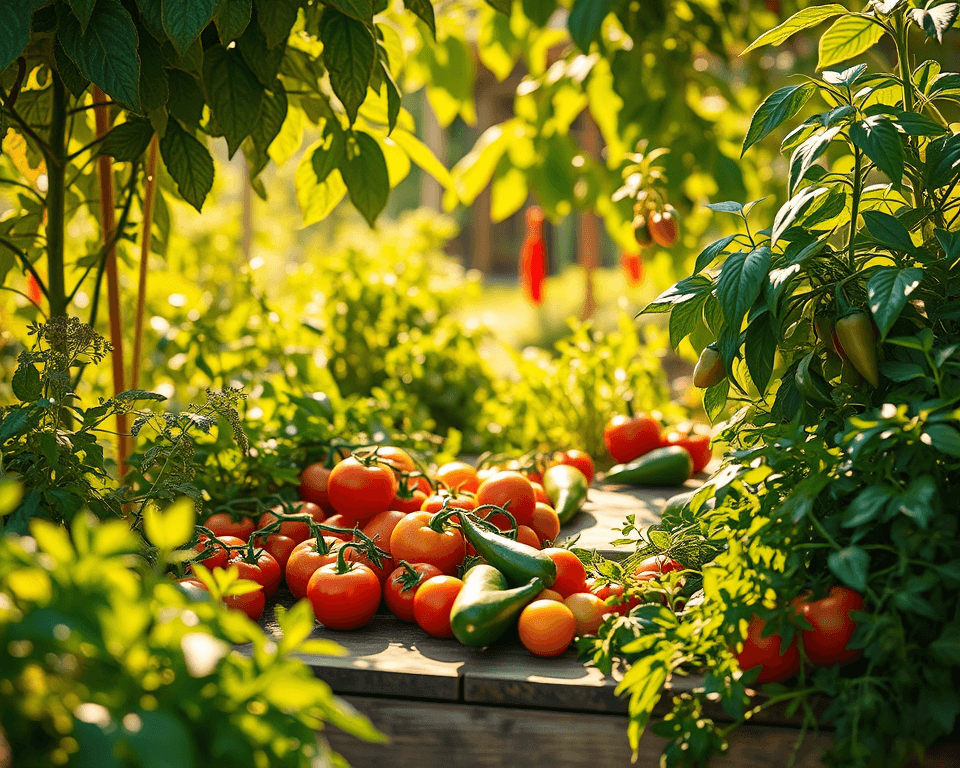I can’t tell you how empowering it feels to take charge of your own life. Imagine growing your food, conserving energy, and being financially savvy—all while knowing you’re making solid, sustainable choices. If you’ve ever pondered how to boost your self-sufficiency game, you’re in for a wild ride. Together, we’re going to break this down into ten actionable steps that’ll make you feel like a pro at self-reliance.
Key Takeaways
- Assess your current skills and resources to identify strengths and gaps.
- Start small with food production techniques like home gardening to build confidence.
- Explore energy efficiency options to lower bills and reduce reliance on the grid.
- Connect with community resources for a richer, more supportive self-sufficiency journey.
- Educate yourself continuously to adapt and grow along the way.
Assessing Your Current Skills and Resources
Before we jump into the fun part—like planting seeds and building rain barrels—let’s take a step back. Knowing where you stand is crucial. So, let’s talk self-assessment. Grab a notebook, and let’s get real about what you have and what you might still need.
Importance of Self-Assessment
I always say, “You can’t improve what you don’t measure.” Get super honest with yourself here. What are your strengths? Maybe you’re a whiz at cooking, or you can fix a leaky sink like it’s a walk in the park. Write those down! Understanding your abilities gives you a clear path.
A quick self-awareness exercise is to jot down what you love to do that might overlap with self-sufficiency. Take stock of your talents that could help shape your journey. Once you’ve got that list, it’ll be easier to spot areas for growth.
Identifying Gaps in Knowledge
We all have gaps in our knowledge, and that’s okay! Recognizing your learning needs helps you map out how you want to enhance your skills. For instance, if you’re keen on food gardening but lack experience with soil preparation, put that on your radar.
There’s a ton of educational resources available online. Places like Udemy or Coursera offer courses from gardening 101 to advanced permaculture techniques—often for under $50.
Don’t worry about diving headfirst into everything at once. Pick one area, set a goal, and go all in. Trust me, this focused approach will help you feel more accomplished.
Learning Food Production Techniques
Now we’re getting to the juicy stuff—literally! Growing your own food is a fantastic way to ramp up your self-sufficiency. Why not make your meals healthier and more sustainable while saving some cash?
Starting a Home Garden
If you’re not already gardening, this is your chance to start! You don’t need a vast backyard; even window boxes or a small container on your balcony can produce results. Consider starting with easy-to-grow veggies like tomatoes, bell peppers, or herbs.
For instance, I picked up some Miracle-Gro Potting Mix for around $10 at Home Depot, and it was a game changer for my plants. Just make sure to choose a good quality soil that nourishes your greens.
When planning your garden, understand your growing zone. The USDA Plant Hardiness Zone Map can help you determine what to plant and when. Take advantage of resources like local gardening clubs or online forums to connect with fellow gardeners for seed swaps and tips.
Preserving Food for Long-Term Storage
Alright, you’ve got your garden flourishing—now what? It’s time to learn how to preserve that bounty. Canning is a terrific skill, but you might also try dehydrating and fermenting. I personally love making pickles; all you need is some cucumbers, vinegar, and a few spices.
To make things super simple, consider investing in a Ball Canning Starter Kit for about $40. It comes with everything you need to get going—jars, rings, a canning book, and even tools to make the process smoother.
Check out food videos online for canning techniques. You’re not just conserving; you’re also extending the flavors of your garden into the winter months.
Embracing Water Conservation Practices
Water is life, and conserving it means preparing for whatever Mother Nature throws our way. With rising temperatures and droughts happening in various places, knowing how to manage water effectively is critical.
Implementing Rainwater Harvesting Systems
This might sound complex, but collecting rainwater can be a pretty straightforward DIY project. Start with simple rain barrels—you can pick up a basic one from Lowe’s for around $60. Just ensure that it has a lid to keep pests out.
You could even modify your gutters to direct water into the barrel. There are tons of instructional videos to guide you through, making it a fun weekend project that yields tangible benefits. Rainwater is great for watering your garden, washing the car, or even flushing toilets.
Understanding Greywater Systems
While we’re talking water, let’s address greywater systems. This involves repurposing water from sinks or showers for irrigation. It might sound technical, but I promise it’s not rocket science. A simple greywater diverter can cost around $100 and can redirect water safely to your garden.
Before diving in, check your local regulations—some areas have specific rules. Once you’re clear, this could significantly reduce water waste and save you bucks on your water bill.
Enhancing Energy Efficiency in Your Home
Feeling like your energy bills are getting out of control? Let’s tackle that! Becoming energy-efficient not only saves money but also reduces your carbon footprint.
Conducting a Home Energy Audit
Consider this your chance to play detective in your home. Grab a notepad, and start looking for areas wasting energy. This could be drafty windows, outdated appliances, or poorly insulated walls.
There are also several online tools like Energy Star that offer DIY energy audits, which can lead you to significant savings. If it feels overwhelming, you might consider hiring a professional auditor, which can cost about $200 but pays off in saved energy costs.
Exploring Renewable Energy Options
Thinking about going green? Solar panels are the way to go. You might’ve heard it’s costly, but there are options to fit almost any budget. Companies like SunPower have panels that range from around $15,000 (including installation) but can significantly lower your dependence on the grid over time.
There are also tax incentives—up to 26% can be claimed on your taxes for solar installations. It’s worth noting that these systems often pay themselves off in 5-7 years. So, you better believe they’re worth the investment!
Developing Financial Self-Sufficiency
Moving on to the nitty-gritty—money. Managing your finances is a cornerstone of self-sufficiency, and it’s essential to develop a budget that aligns with your goals.
Creating a Personal Budget
Budgeting doesn’t have to be a drag. Start by tracking your expenses for a month with apps like Mint or You Need a Budget (YNAB), which will help you to visualize where your money is going.
Once you see those numbers, you’ll get inspired to create a monthly financial plan. This could mean cutting back on takeout or planning better meals at home.
Identifying Additional Income Streams
Want to be even more self-sufficient? Consider boosting your income! Maybe it’s time to monetize those skills. Think about freelance work or side hustles. If you’re great at woodworking, Etsy is an excellent platform to sell custom pieces.
To get the ball rolling, websites like Fiverr or Upwork provide spaces for offering freelance services—from graphic design to writing.
Don’t just stick to one income stream; find a few small gigs you enjoy doing so that it diversifies your money flow.
Building Community Connections
You don’t have to go at it alone. Building community connections can elevate your self-sufficiency journey dramatically.
Finding Local Self-Sufficiency Groups
Check out local Facebook groups or websites like Meetup to find fellow self-sufficiency enthusiasts. Here you can share resources, swap seeds, or even barter homemade goodies.
Being part of a community keeps the motivation high! After all, who doesn’t love sharing fresh produce with neighbors or trading a few homemade jams?
Participating in Skill-Sharing Workshops
So, you’ve found a group—you’re not done yet! Attend workshops, whether that’s learning how to preserve food or building your own compost system. Community colleges often offer classes for a mere $20 or so.
I’ll never forget the first time I attended a local canning workshop. Everyone brings their jars, and you end up walking away with new skills—and a belly full of delicious pickles!
Staying Informed and Educated
Knowledge is the cornerstone of self-sufficiency. The more you learn, the more you can adapt.
Utilizing Online Resources and Courses
Whether you’re looking to learn about urban gardening, aquaponics, or cryptocurrency investing, online resources are everywhere. Websites like Skillshare or even YouTube have loads of free tutorials. Just imagine getting all that info for the cost of your internet bill!
Find what resonates with you. Whether it’s a blog or a channel, consume all the quality content you can muster.
Reading Books and Articles on Self-Sufficiency
Author a book list tailored to your interests. Books like “The Permaculture Handbook” by Peter Bane or “The Backyard Homestead” provide actionable insights on self-sufficient living.
Making it a goal to read at least one book each month can massively broaden your understanding of self-sufficient practices. Join book clubs or reading groups to discuss what you’ve learned, enriching the experience even further.
Preparing for Emergencies
We can’t predict the future, but we can prepare for it. Being self-sufficient entails being ready for whatever life throws your way.
Creating an Emergency Kit
Let’s be real—things can get messy. An emergency kit is your safety blanket. Start with essentials: water, food, first aid supplies, and tools.
A good starting point is a pre-packed emergency kit, which can cost between $50 and $150 depending on its contents.
Here’s a quick checklist for your kit:
- Non-perishable food (like canned beans or peanut butter)
- Water (enough for at least three days)
- Flashlights and extra batteries
- First aid supplies (band-aids, antiseptic wipes, etc.)
Developing Essential Survival Skills
Why not take a skills boot camp approach? Learn basic survival techniques like shelter building or foraging. Many outdoor schools offer programs. These adventures can run anywhere from $50 to a couple of hundred, depending on the length and depth of training.
Workshops and meet-ups with like-minded folks can help bolster those skills through practice.
Understanding and Practicing Minimalism
Minimalism isn’t just trendy; it’s practical! Cutting out the clutter helps streamline every aspect of life—including self-sufficiency.
Benefits of Minimalist Living
Imagine living in a home that feels spacious and decluttered. Minimalism helps reduce stress and brings clarity. It also brings clutter of the mind down to a minimum.
Having fewer possessions means spending less on stuff you don’t need; more funds can go toward self-improvement.
Declutter Your Home and Life
A good decluttering session can boost your motivation. Start small—grab a drawer or a closet and go through every item. Ask yourself if it brings you joy or serves a purpose in your life.
Afterward, consider donating or selling what you don’t need. Websites like OfferUp or Poshmark are excellent for selling items you no longer use, and you could pocket a decent amount.
Here’s a mini table for easy reference on decluttering:
| Category | Keep | Donate/Sell |
|---|---|---|
| Clothing | Faves only | Outfits you haven’t worn in 6 months |
| Kitchen Items | Daily-use items | Duplicates or seldom-used gadgets |
| Miscellaneous | Sentimental items | Random trinkets and office supplies |
Implementing Sustainable Practices
Lastly, let’s wrap it all up with sustainability. This is the cherry on top of your self-sufficiency sundae.
Adopting a Zero Waste Lifestyle
Shifting to zero waste doesn’t mean you have to be an environmental saint overnight. It starts small. Invest in reusable bags, water bottles, and containers.
Consider working with brands like Bee’s Wrap to replace plastic wrap—these can run about $20 for a pack and are a sustainable alternative for wrapping food.
Supporting Local and Sustainable Businesses
Always opt for companies that resonate with your values. Supporting local farmers and businesses helps keep your community vibrant while reducing the carbon footprint.
Farmers’ markets are a great place to source locally grown produce. You can usually spot organic veggies that taste like they just came out of the ground!
By becoming more self-reliant, you’re making choices that positively impact your life and the planet. Each of these steps brings you closer to achieving a fulfilling lifestyle that’s not just about surviving; it’s about thriving—on your terms.
Frequently Asked Questions
How can I begin my journey towards self-sufficiency?
To start your journey, assess your current skills and resources to identify gaps. Then, focus on practical areas like food production, water conservation, and financial management. Gradually implement changes, starting small, such as creating a home garden or budgeting effectively.
What are some beginner-friendly gardening tips for food production?
Begin by selecting easy-to-grow vegetables like tomatoes or lettuce. Use quality soil, understand your plants’ needs, and follow a planting schedule. Consider container gardening if space is limited, and utilize organic gardening methods to promote sustainable growth.
How do I preserve food for long-term storage?
Food can be preserved through methods like canning, freezing, dehydration, and fermentation. Start with simple techniques such as canning fruits and vegetables or freezing excess produce. Ensure you follow safe procedures to maintain food quality and safety.
What are effective water conservation practices I can implement at home?
Implement rainwater harvesting by setting up barrels to collect rainwater, and practice greywater reuse by recycling water from sinks and baths for irrigation. Additionally, use water-efficient fixtures and adopt mindful habits to minimize water waste.
What are the benefits of conducting a home energy audit?
A home energy audit identifies areas of energy loss, allowing you to implement cost-saving improvements. By enhancing energy efficiency, you can reduce utility bills, lower your carbon footprint, and achieve greater energy independence in your home.
How can I diversify my income streams for better financial self-sufficiency?
Explore freelance opportunities, side hustles, or monetizing hobbies to create multiple streams of income. Consider developing skills in areas like writing, graphic design, or teaching to generate passive income or pursue entrepreneurial ventures.
Why is community involvement important for self-sufficiency?
Joining local self-sufficiency groups fosters support and resource exchange. Community involvement provides access to shared knowledge and skills, strengthening connections and creating collaborative living environments that enhance resilience and preparedness.
What should I include in an emergency preparedness kit?
An emergency kit should contain essentials like non-perishable food, water, first-aid supplies, flashlights, batteries, and personal hygiene items. Tailor your kit based on your specific needs, and regularly check supplies to ensure readiness for any emergencies.
How can practicing minimalism contribute to self-sufficiency?
Minimalism emphasizes intentional living and reducing excess, which leads to decreased consumption and waste. By simplifying your life, you can better manage resources, focus on essentials, and foster an environment conducive to self-sufficiency.
What sustainable practices can I adopt to support eco-friendliness?
Adopt practices such as composting food scraps, reducing single-use plastics, and supporting local, ethical businesses. By making conscious choices, you promote sustainability in your lifestyle and contribute positively to the environment and local economy.










